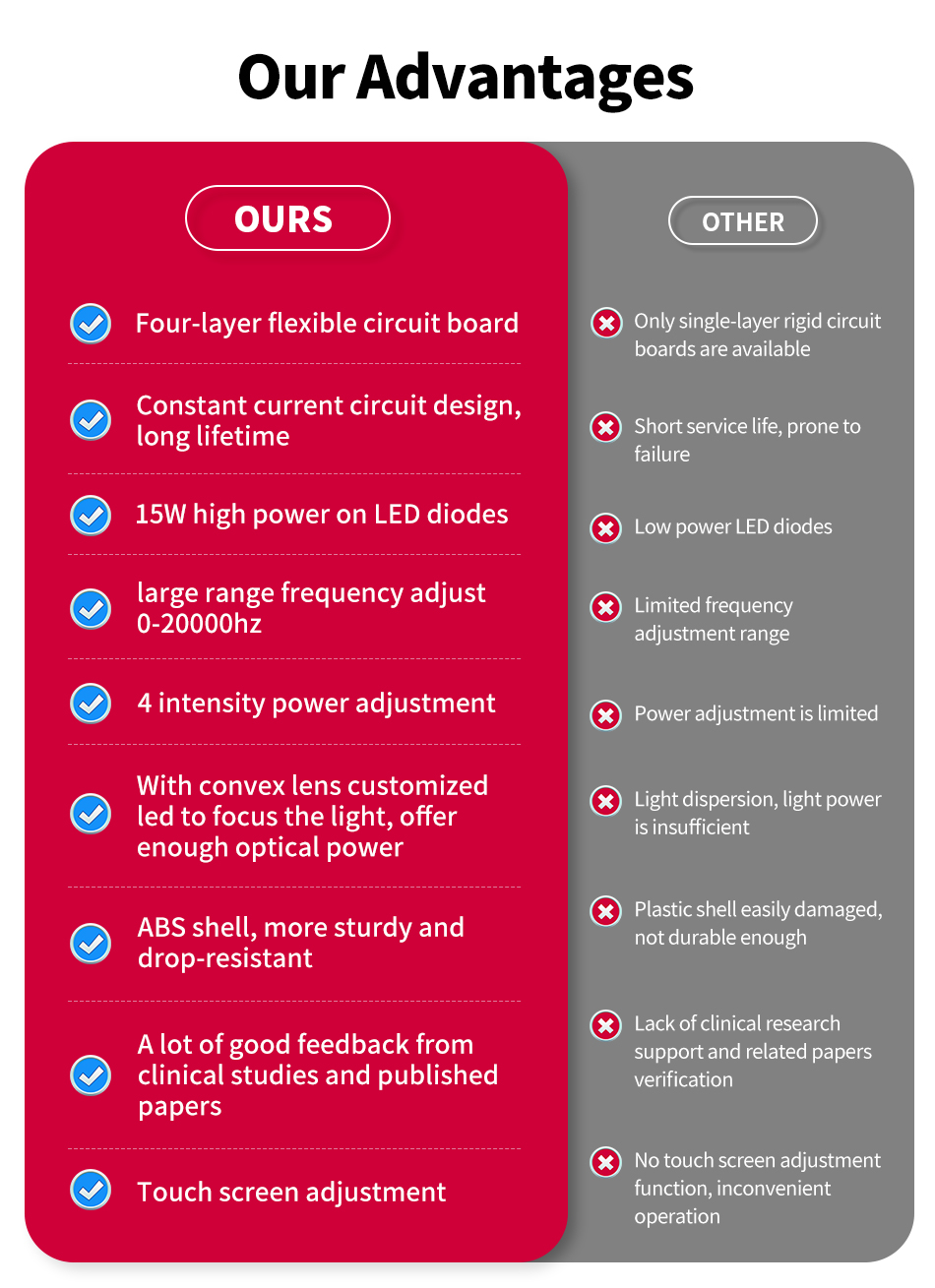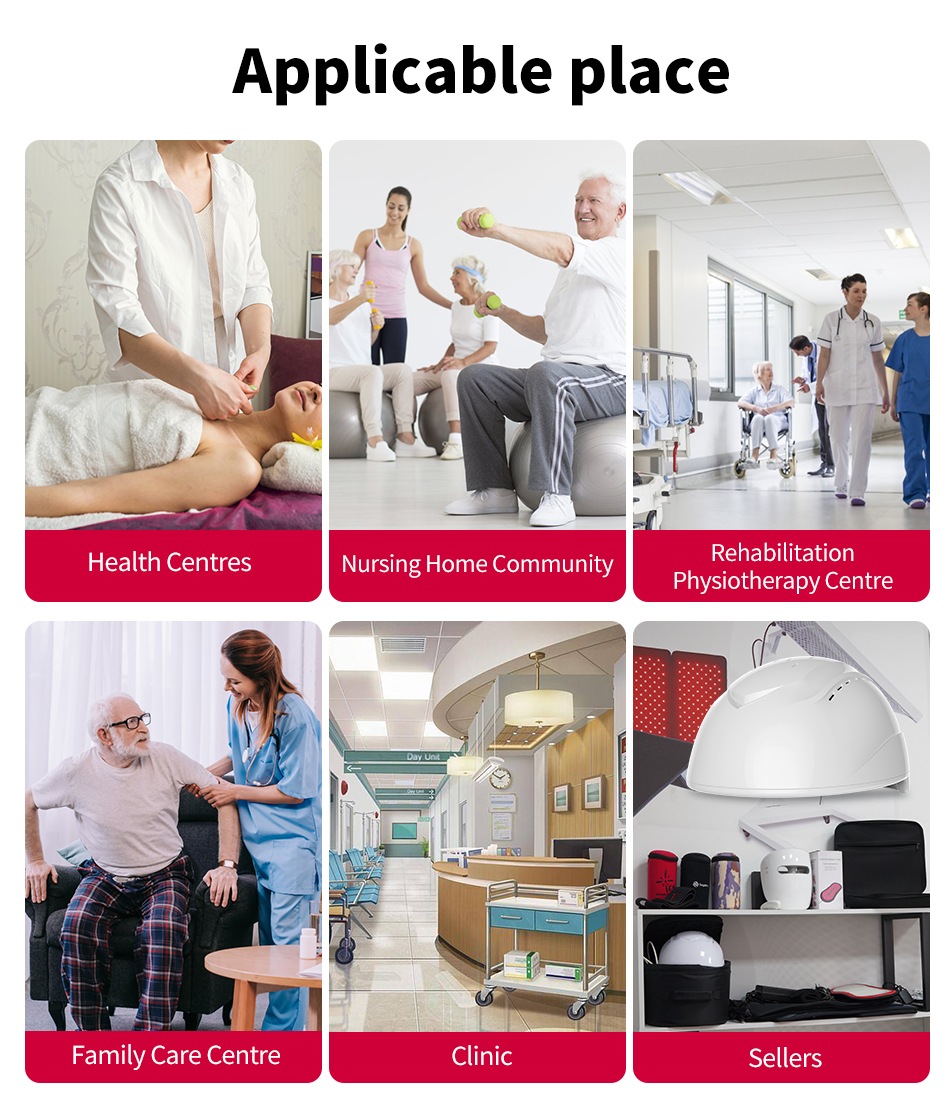810nm Light Therapy: A New Hope for Brain Disorders.
 Suyzeko
Suyzeko
 Jul 18,2025
Jul 18,2025

810nm Light Therapy: A New Hope for Brain Disorders
Introduction
A new frontier in non-invasive brain therapy is emerging with 810nm near-infrared (NIR) LED helmets, designed to harness the power of Photodynamic Therapy (PDT) for deep brain healing. Unlike traditional Low-Level Light Therapy (LLLT), this approach focuses on light-activated biochemical mechanisms to combat neurodegeneration, mental health disorders, and brain trauma. How does it work, and what makes it different? Let’s explore the science and real-world potential of this cutting-edge treatment.
 The Science Behind 810nm NIR LED Photodynamic Therapy (PDT)
The Science Behind 810nm NIR LED Photodynamic Therapy (PDT)
Photodynamic Therapy (PDT) traditionally uses light-sensitive compounds (photosensitizers) activated by specific light wavelengths to trigger cellular repair or destruction (e.g., in cancer treatment). However, 810nm NIR LED helmets operate differently—without external photosensitizers—by leveraging the brain’s natural light-responsive proteins.
Key Mechanisms:
Deep Brain Penetration – The 810nm wavelength penetrates the skull efficiently, reaching critical brain regions like the prefrontal cortex, hippocampus, and thalamus.
Cellular Energy & Repair Activation – NIR light interacts with mitochondrial chromophores, boosting ATP production and reducing oxidative stress.
Neuroprotective & Anti-Inflammatory Effects – Studies suggest 810nm light reduces neuroinflammation, enhances neuroplasticity, and may even stimulate neural repair pathways.
Unlike LLLT (which relies on low-intensity light for general stimulation), this PDT-inspired approach targets specific biochemical pathways for more precise therapeutic effects.
Key Applications of 810nm LED Helmet Therapy (PDT Approach)
1. Neurodegenerative Diseases (Alzheimer’s, Parkinson’s, Dementia)
How it helps: Enhances mitochondrial function, reduces amyloid-beta plaques, and improves cerebral blood flow.
Evidence: Early research shows slowed cognitive decline in neurodegenerative models.
2. Mental Health Disorders (Depression, Anxiety, PTSD)
How it helps: Modulates neurotransmitter activity (serotonin, dopamine), reduces neuroinflammation in mood-regulating areas.
Evidence: Pilot studies report improved mood and reduced anxiety symptoms.
3. Traumatic Brain Injury (TBI) & Stroke Recovery
How it helps: Promotes axonal regrowth, reduces edema, and accelerates neurovascular repair.
Evidence: Military and sports medicine trials indicate faster functional recovery.

4. Chronic Pain & Migraine Management
How it helps: Disrupts pain signal pathways, decreases microglial overactivation.
Evidence: Users report reduced headache frequency and intensity.
Why Choose an 810nm LED Helmet?
✅ Precision Treatment – Directly targets brain tissue without systemic drugs.
✅ Non-Toxic & Non-Invasive – No chemicals or surgery required.
✅ Convenient Home Use – Short sessions (10-20 mins/day) with no downtime.
Conclusion: The Future of Brain-Specific Photodynamic Therapy?
While 810nm NIR LED helmets are still under rigorous study, early findings suggest transformative potential for brain-related disorders—without the limitations of LLLT or pharmaceuticals. As research advances, this could become a game-changer for patients, biohackers, and clinicians seeking safe, effective brain optimization.

Would you try this next-gen therapy? Share your thoughts below!



 Home
Home See here for a great way to help you improve your gastrointestinal health!
See here for a great way to help you improve your gastrointestinal health! 











